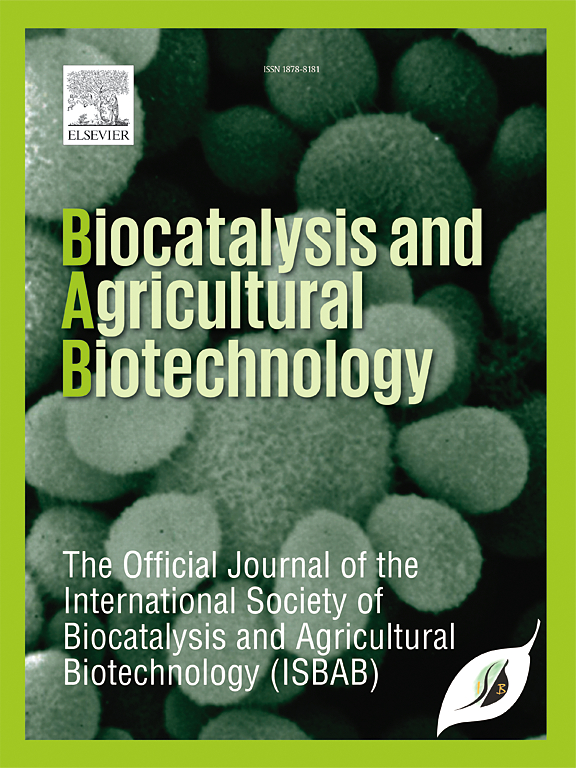Production of bacterial cellulose from banana waste (Musa paradisiaca): A sustainable material for making cardboard paper
IF 3.4
Q2 BIOTECHNOLOGY & APPLIED MICROBIOLOGY
引用次数: 0
Abstract
Bacterial cellulose (BC) is a biopolymer with advantages over plant cellulose, but its high cost has led to the search for alternative substrates. In Colombia, banana processing generates organic waste that can be utilized for BC production. Thus, the aim of this study was to assess the feasibility of using banana pulp waste (Musa paradisiaca) as an alternative carbon source in culture media for BC production by the bacteria K. xylinus and analyze its physicochemical properties and applicability in cardboard manufacturing. It was found that the 1:2 ratio of banana pulp to water yielded the highest BC production, suggesting greater nutrient availability in this ratio. A pH of 4.4 proved optimal for BC production, providing an appropriate acidic environment for bacterial growth. After optimizing the culture medium, BC yield increased significantly, with the production reaching up to 30 g/L, demonstrating the effectiveness of optimizing the substrate ratio and pH in enhancing cellulose synthesis. Physicochemical tests confirmed the purity of the obtained BC, with structural characteristics consistent with expected cellulose. Furthermore, cardboard made with this BC exhibited superior mechanical properties, with greater tensile and compression strength compared to the control cardboard, indicating enhanced durability and strength for industrial use. In conclusion, the use of banana waste as a carbon source for BC production offers a promising solution with significant economic and environmental benefits. The optimization of cultivation conditions, such as ratio and pH, and the confirmation of final product purity and quality, underscore the potential of this approach for sustainable industrial applications in biomaterial production.

求助全文
约1分钟内获得全文
求助全文
来源期刊

Biocatalysis and agricultural biotechnology
Agricultural and Biological Sciences-Agronomy and Crop Science
CiteScore
7.70
自引率
2.50%
发文量
308
审稿时长
48 days
期刊介绍:
Biocatalysis and Agricultural Biotechnology is the official journal of the International Society of Biocatalysis and Agricultural Biotechnology (ISBAB). The journal publishes high quality articles especially in the science and technology of biocatalysis, bioprocesses, agricultural biotechnology, biomedical biotechnology, and, if appropriate, from other related areas of biotechnology. The journal will publish peer-reviewed basic and applied research papers, authoritative reviews, and feature articles. The scope of the journal encompasses the research, industrial, and commercial aspects of biotechnology, including the areas of: biocatalysis; bioprocesses; food and agriculture; genetic engineering; molecular biology; healthcare and pharmaceuticals; biofuels; genomics; nanotechnology; environment and biodiversity; and bioremediation.
 求助内容:
求助内容: 应助结果提醒方式:
应助结果提醒方式:


